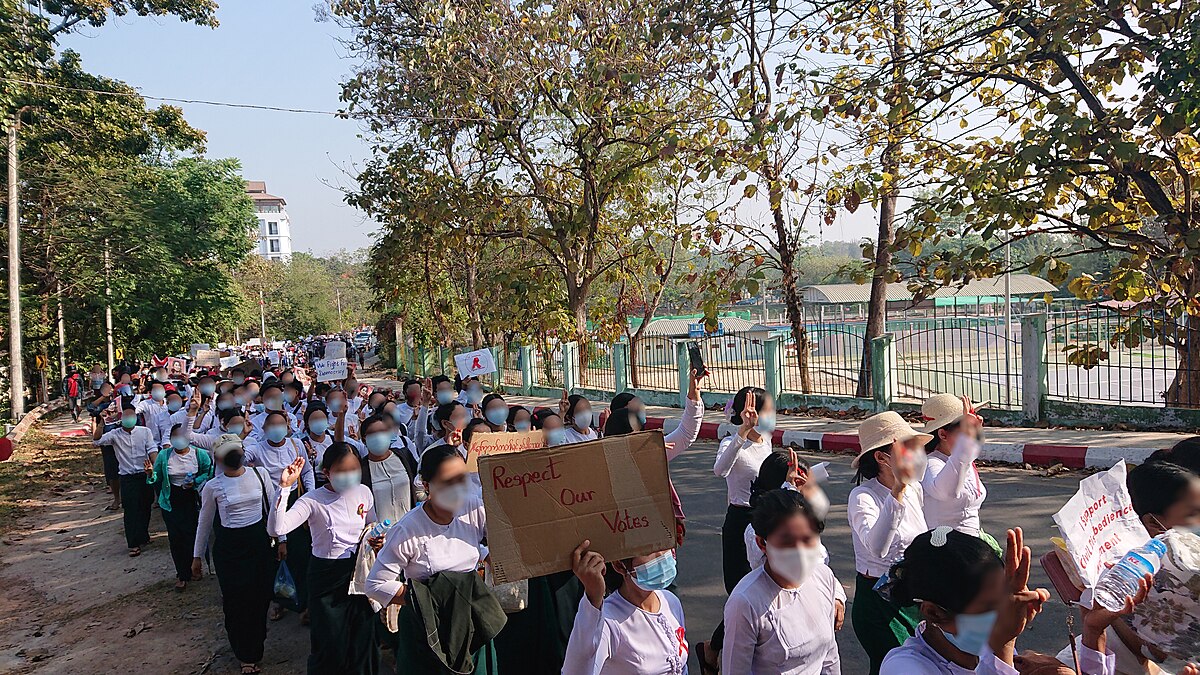
2021 Feb 1
Colpo di stato in Myanmar del 2021
Myanmar (Burma)Un colpo di stato in Myanmar è iniziato la mattina del 1° febbraio 2021, quando i membri democraticamente eletti del partito al governo del paese, la Lega nazionale per la democrazia (NLD), sono stati deposti dal Tatmadaw, l’esercito del Myanmar, che ha poi conferito il potere a un giunta militare.Il presidente ad interim Myint Swe ha proclamato lo stato di emergenza per un anno e ha dichiarato che il potere è stato trasferito al comandante in capo dei servizi di difesa Min Aung Hlaing.Ha dichiarato non validi i risultati delle elezioni generali del novembre 2020 e ha dichiarato la propria intenzione di indire nuove elezioni alla fine dello stato di emergenza.[103] Il colpo di stato è avvenuto il giorno prima che il Parlamento del Myanmar prestasse giuramento ai membri eletti alle elezioni del 2020, impedendo così che ciò accadesse.[104] Il presidente Win Myint e il consigliere di Stato Aung San Suu Kyi sono stati arrestati, insieme ai ministri, ai loro vice e ai membri del Parlamento.[105]Il 3 febbraio 2021, Win Myint è stato accusato di aver violato le linee guida della campagna e le restrizioni sulla pandemia COVID-19 ai sensi della sezione 25 della legge sulla gestione dei disastri naturali.Aung San Suu Kyi è stata accusata di aver violato le leggi sull’emergenza COVID-19 e di aver importato e utilizzato illegalmente dispositivi radio e di comunicazione, in particolare sei dispositivi ICOM della sua squadra di sicurezza e un walkie-talkie, che sono vietati in Myanmar e necessitano dell’autorizzazione da parte delle autorità militari. agenzie prima dell'acquisizione.[106] Entrambi furono tenuti in custodia cautelare per due settimane.[107] Aung San Suu Kyi ha ricevuto un'ulteriore accusa penale per aver violato la legge sui disastri nazionali il 16 febbraio, [108] due accuse aggiuntive per aver violato le leggi sulle comunicazioni e l'intento di incitare disordini pubblici il 1° marzo e un'altra per aver violato la legge sui segreti ufficiali il 1 aprile.[109]Insurrezioni armate da parte delle Forze di difesa popolare del governo di unità nazionale sono scoppiate in tutto il Myanmar in risposta alla repressione del governo militare sulle proteste anti-colpo di stato.[110] Al 29 marzo 2022, almeno 1.719 civili, compresi bambini, sono stati uccisi dalle forze della giunta e 9.984 arrestati.[111] Anche tre importanti membri della NLD sono morti mentre erano in custodia di polizia nel marzo 2021, [112] e quattro attivisti pro-democrazia sono stati giustiziati dalla giunta nel luglio 2022. [113]
▲
●
Ultimo aggiornamentoMon Oct 02 2023
